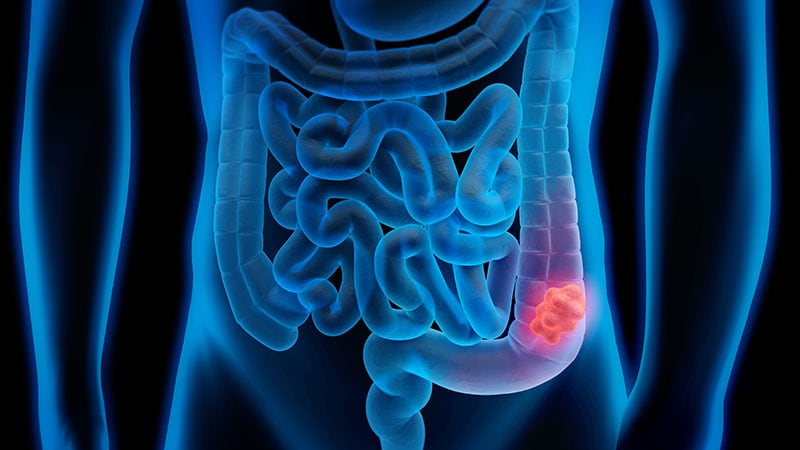Medscape UK has previously written about the disproportionate numbers of people from black, Asian and minority ethnic (BAME) groups affected by COVID-19. It is known that particular groups of BAME people have higher rates of long-term conditions that are associated with COVID-19 fatalities, such as high blood pressure and diabetes. A recent Institute of Fiscal Studies report showed per-capita COVID-19 hospital deaths are highest among the black Caribbean population, which has a fatality rate almost three times that of the white British majority.
Occupational exposure may partially explain disproportionate deaths for some BAME groups. According to BBC News, doctors, nurses, technicians, bus drivers, shelf stackers, and care workers are at higher risk of infection through the jobs they do, because they come into contact with higher numbers of people.
An analysis by the Guardian found 61% of UK health workers who died with COVID-19 were from ethnic minority backgrounds.
More than 2 in 10 black African women of working age are employed in health and social care roles. Indian men are 150% more likely to work in health or social care roles than their white British counterparts. While the Indian ethnic group makes up 3% of the working-age population of England and Wales, they account for 14% of doctors.
Data published on 15th May from the Intensive Care and National Audit Research Centre (ICNARC) on COVID-19 in critical care suggest that around 33% of critically ill coronavirus patients are from BAME backgrounds.
Breakdown of Ethnicity, n (%) [N=7852]:
- White 5242 (66.8)
- Mixed 134 (1.7)
- Asian 1191 (15.2)
- Black 780 (9.9)
- Other 505 (6.4)
However, a recent report from the Government’s Scientific Advisory Group for Emergencies (SAGE) investigating associations between ethnicity and outcome from COVID-19 states: "When patient characteristics are taken into account, no excess HDU/ICU admissions or deaths are seen in the BAME group."
The Royal Society of Medicine webinar series on COVID-19 and BAME discussed the issues of COVID, ethnicity, and racism.
Racism and COVID-19?
The guest panel: Dame Donna Kinnair, chief executive and general secretary of the Royal College of Nursing, Professor Kevin Fenton, regional director, Public Health England (PHE) London and Dr Sarah Filson, infectious diseases registrar at King's College Hospital, London discussed whether there is more to the statistics than just demographics - might there be thinly disguised discrimination and racism afoot in the COVID pandemic? Dame Donna thinks there is. She gave the example of a mental health nurse who had contacted her over lack of PPE.
Dame Donna said: "This was a nurse that was actually seeing undifferentiated patients for a mental health hospital, everybody else had been closed down, working from home, behind the scenes. She was terrified, so she emailed me and we got into a conversation about what is she wearing, well of course nothing (no PPE). We weren't doing that to GPs on the front line, but [she was seeing] an undifferentiated group of patients, [when] everyone else was doing their assessments by telephone. So, she felt really unsupported and every single time she went to her management structure, they were telling her PHE guidance is (then) that you don't need anything… And I think it was universally a level of discrimination because actually, people don't feel able to speak up. And we have a culture in the NHS where people aren't speaking up. So, we're unclear why these issues are there around safety at work especially for BAME members, because there's been a slowness to answer. And I think their lived experience is telling us that they are at increased risk, but Government and organisations have been really slow to respond."
Dr Filson posed the question: "Is it about time that we had an honest conversation about race within this country in regards to the effects it has on health inequalities?"
Dame Donna responded: "The measures that determine racism and discrimination at work tend to be skewed, as they focus on obvious breaches of law, and conduct. So, if you take the example that I gave about this mental health nurse, there's not an obvious breach of law, but there is some questionable conduct in terms of sticking to something and not engaging in a conversation. I think that we already have the cumulative impact of racism, every day. But we don't measure incivility, poorer treatment, poorer outcomes because they are usually individual experiences, but we do have the race data, and it is a powerful tool."
Professor Fenton added to the discussion. He told listeners about a new study PHE is conducting with more than 1000 participants, which asked participants for their opinions on the issues driving this disproportionality. "The issues of racism, fairness, trust, discrimination and stigma are certainly coming out loud and clear from so many of our stakeholders and partners, so we knew that this is a live issue. It is a real issue."
Disaggregation of BAME Categories
Dr Filson made the point that by talking about black Asian and ethnic minorities as one group, we should question "whether we're really seeing the whole picture, or whether we need to disaggregate them as a group and look at different ethnic groups". She added "there are some issues with the term African, which we won't go into on this webinar".
Professor Fenton agreed. "Absolutely, wherever possible we should be speaking about the communities using the languages and the terms which are most appropriate to that community. The term BAME is often used in a shorthand way, [but] from an analytic perspective we are looking at a variety of ethnic groups and subgroups, where the data allow, [and] this has enabled us to have much greater insights into the effects of COVID-19 at various stages in the clinical pathway." He added that there was a need to get beyond the sort of high-level aggregation of BAME and explore the role of faith, culture, particular behaviours, risks, [as well as] structural issues such as racism and discrimination, stigma and fear, and how these play out in different communities and groups across the country.
Genetic Predisposition to COVID-19 and BAME?
A number of viewers at the RSM webinar asked about the genetic component [in COVID-19 susceptibility] specifically linked to angiotensin-converting enzyme 2 receptors (ACE 2) and the renin angiotensin system, [and how this might differ] in regards to different ethnicities. Dame Donna urged researchers not to just "look down a biological route and forget all the other issues such as exposures and inequalities". However, Professor Fenton explained the need to explore ‘the biological route’ further. He told listeners: "We know that there may well be an interaction with cardio-metabolic diseases, so if you have uncontrolled hypertension, heart disease, obesity or type 2 diabetes, these may well influence or intersect with your inflammatory response, leading to a poorer outcome. So, what we have to understand is that there's a pathway that goes from your social risk, community risk straight through to occupational risk and then through to your individual characteristics, and how that interplays with both becoming infected and how your body manages the infection. All of these things, will need to be considered as we move forward."
Redeployment of BAME Staff From the Front Line
Dame Donna said: "What we do know is the risk of COVID-19 is not shared equally across groups." She called for proper workplace health assessments, "because we know that there are some underlying conditions that exacerbate this virus". She suggested that staff with underlying conditions could be redeployed [away] from "areas with the highest risk or highest concentration of COVID-19 patients, such as ICU", although she conceded that "you can’t redeploy every BAME member from the front line".
COVID and Occupational Hazards
Professor Fenton highlighted the roles of various occupations in the likelihood of acquiring COVID-19. "Occupational risk is related to two key factors: the first is your probability of having social contact, so if you're in a job where you're coming into contact with lots of members of the public quite frequently, then you're much more likely to come in contact with the virus. That may well explain some of the increased risk that transportation workers and other key workers such as security guards have experienced with COVID. The second occupational risk is the likelihood of coming into contact with somebody who is COVID-infected, and that would explain the health care worker risk as well."


